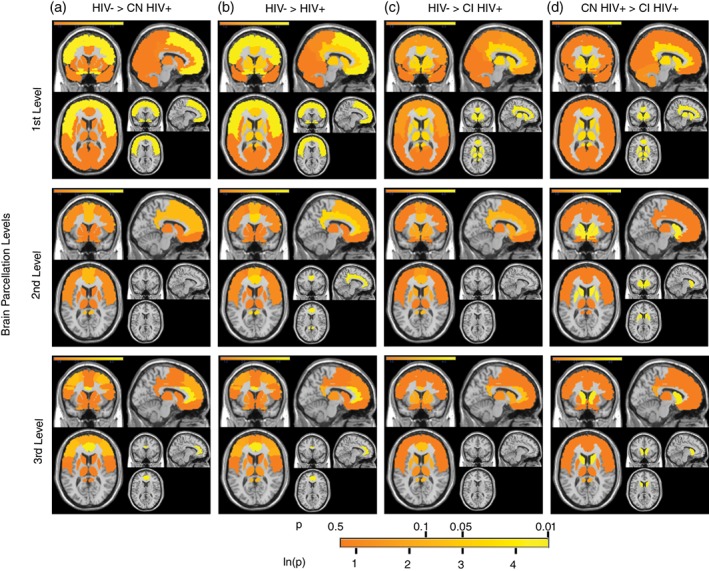Figure 2.

The colocalization‐likelihood estimation (CLE) results of four group comparisons at three different brain parcellation levels. The four group comparisons included: (a) HIV− controls versus cognitively normal HIV+ adults; (b) HIV− controls versus HIV+ adults in general (including HIV+ adults with normal cognitive function (CN), HIV+ adults with cognitive impairment (CI), and those without neurocognitive data (i.e., the neurocognitive data was not reported in the original study); (c) HIV− controls versus cognitively impaired HIV+ adults; and (d) cognitively normal HIV+ adults versus cognitively impaired HIV+ adults. The three levels of brain parcellation included: (a) the first level, which was a coarse parcellation of the entire brain, including frontal, limbic/subcortical, parietal, temporal, and so forth; (b) the second level, which was a parcellation of brain networks within the frontal‐limbic‐subcortical system, such as striatum, cingulate, thalamus, medial temporal lobe, inferior frontal cortex, and so forth; and (c) the third level, which was a more fine parcellation of the subregions within the frontal‐limbic‐subcortical network, including caudate, anterior cingulate cortex, hippocampus, and so forth, (see methods for details). The significance level at each region was illustrated via a color scale, from 0.5 to 0.01 (for the ‐ln[p], the range was from 0.69 to 4.6). For each comparison at each parcellation level, the brain regions that demonstrated significant group difference were shown at the bottom‐right of each subplot. CI HIV+: cognitively impaired HIV+ adults; CN HIV+: cognitively normal HIV+ adults; HIV+: HIV+ adults regardless of neurocognitive function; HIV−: HIV− controls
